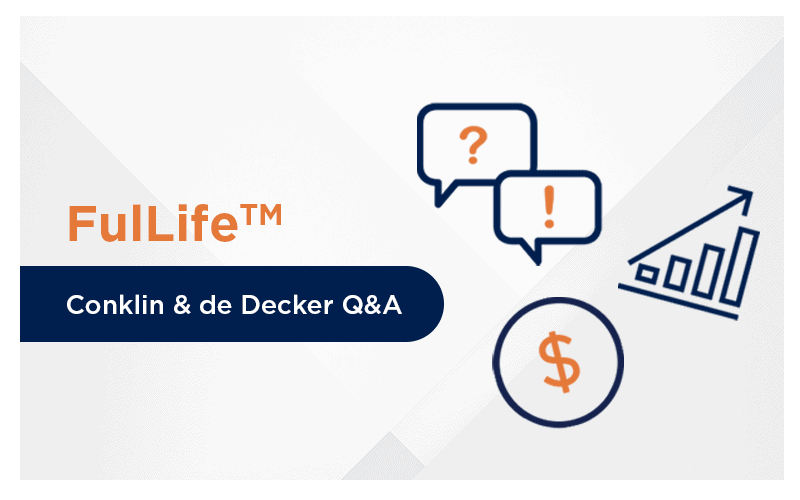 In this Conklin & de Decker Q&A, Ron Garis, Senior Data Management Analyst, explains the unique advantages FulLife™ brings to the new and pre-owned aircraft comparison and benchmarking process.
In this Conklin & de Decker Q&A, Ron Garis, Senior Data Management Analyst, explains the unique advantages FulLife™ brings to the new and pre-owned aircraft comparison and benchmarking process.
As the industry standard for relative cost and benchmarking, the Conklin & de Decker Report enables users to create effective and engaging reports to compare and evaluate fixed and variable FulLife™ aircraft operating costs.
Since 2019, we have utilized FulLife™ as the most accurate method to estimate maintenance costs for jets, turboprops, helicopters and piston aircraft.
With FulLife™, we estimate funds required to pay for all scheduled, unscheduled, near-term and eventual aircraft maintenance required over the operational life cycle. We factor in every inspection, component overhaul and replacement of all life-limited items.
For decades, we utilized what’s known as the 10-year average approach. This provided a useful apples-to-apples methodology we could apply to compare hourly maintenance costs for any aircraft over a 10-year period.
If a new aircraft rolls off the production line and sells in 2021, this would count as year zero and the start of the 10-year period. All maintenance occurring through 2031 would then be factored in to calculate the average maintenance cost per hour.
If we are looking at an out-of-production aircraft, we used the last year the aircraft was produced as the model year for comparison. For example, if an aircraft had a production run from 2002 to 2018, we used the 2018 model. We would still use present day as the start of the 10-year period to compare maintenance costs “apples to apples” with the new aircraft.
We continuously review, refine and enhance our data to ensure we’re delivering the most accurate data possible to aircraft owners and operators around the world. Over the years it became apparent that with the 10-year average methodology, our customers were not always getting to see the entire maintenance story over the life of the aircraft.
As an example, one original equipment manufacturer (OEM) may have a large, expensive inspection that falls outside of the standard 10-year timeframe, while another may include a similar inspection within this period.
If a buyer compared both aircraft types, that expensive inspection falling outside the 10-year period would not be reflected in the estimated hourly maintenance cost. In theory, this could hand the aircraft an unfair hourly cost advantage over the other model with a similar expensive inspection that happens to fall within the 10-year period.
Every maintenance event that will occur on the aircraft is logged to estimate the average hourly cost for each event. We then add everything together to calculate the total hourly maintenance cost, or FulLife™ cost.
For example, let us say there is a 100-hour inspection that costs $100. The cost for that inspection on an hourly basis would be $1. This is the same for every aircraft, regardless of the total hours or age of the specific aircraft.
It is worth noting that the hourly cost includes labor, parts, and components for the entire aircraft, including standard interior and standard avionics and cockpit displays. However, any optional interior furnishings, equipment, avionics and displays would not be included here. These costs can all be reviewed over in the fixed-cost section of the Conklin & de Decker Report.
All of our industry-leading software and digital tools are powered by decades of knowledge, expertise and the best performance data on the market. We are incredibly proud of our extensive research and always stand by our data.
The FulLife™ concept is a unique offering in the aviation industry developed by industry pioneers who truly understand how to best represent aircraft cost data. We are always happy to answer any questions regarding our numbers and can even help customize the assumptions that go into an individual report to fit a customer’s unique situation.
Estimating the hourly maintenance cost for an aircraft is obviously a complex subject with many variables to account for. Different assumptions can be used to reach that final number and, if a customer is not aware that these costs can be calculated differently, there’s a risk of reaching an incorrect conclusion when comparing data from different sources.
Our ongoing goal is to ensure Conklin & de Decker customers are always equipped to make fully informed decisions when comparing and benchmarking aircraft.